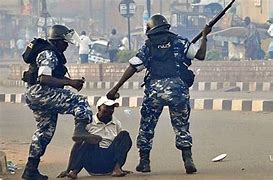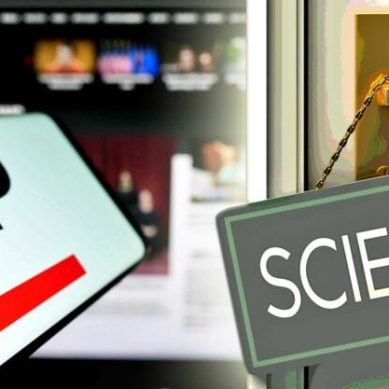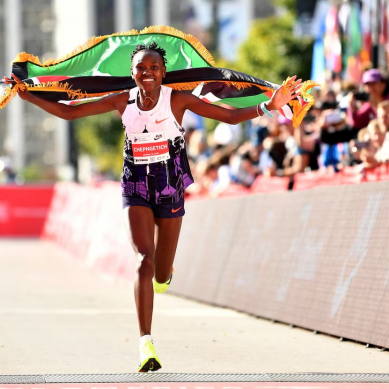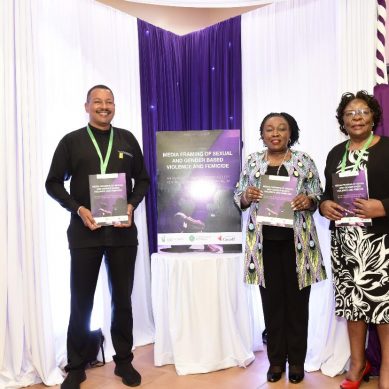
Anger is not the problem, violence is……we can use our anger to guide us in constructing a more just society. Or we can use it to destroy ourselves and those around us” (Paul Kivel cited by Keith Edwards, 2015).
Ordinarily when we conceive, talk or write about violence in Uganda and the Great Lakes Region, we immediately evoke political, military and police violence, all of which are forms of physical violence. Even when we talk or write about genocide, ecocide or ethnocide, we frequently evoke the physical forms of violence, which invariably include torture and sexual abuse.
All my earlier writing on violence were on physical violence. However, we should know and convince others to know that the worst forms of violence are not physical – those that violate our human rights by attacking our minds in in their diverse dimensions.
Unfortunately, these different types of violence, which may be contributing far more to genocide, ecocide and ethnocide than the physical forms of violence, are almost ignored in peace and security budgets of nations. When they are given attention ot is to use them as tools of torture used to conquer, dominate and submerge the citizens into fear in concealed torture chambers.
In Uganda, their use has become integral to security arrangement intended for use as tools to exclude young politicians from meaningful and effective participation in the sociopolitical sphere of human endeavour. These political tools, are rendering many people too sick mentally, psychologically and emotionally and to survive in a sea of fear. This might explain why medical authorities say 14 million of our nearly 46 million humans are mentally sick and psychologically and mentally insecure. If one is mentally sick one is also psychologically and emotionally sick.
Our 14 million mentally, psychologically and emotionally cannot relate well with other Ugandans. Therefore, they are unable to meaningfully contribute to the development, transformation and progress of the country. They do not only form an aberration of our population, which is mainly a youthful population, but are also a big burden on those who wake up to work and produce.
Thrown into hopelessness and haplessness, mentally, psychologically and emotionally unbalanced or sick people take to drugs, which worsens their situation further, and leads them into committing physical violence against their own parents, brothers, sisters, acquaintances, etc. A violent population cannot produce. This increasingly non-productive nature of the youthful population partly combines with the greed and selfishness of our political and military leaders to make our debt burden spiral upwards.
At the end of this article, I have given you some references so that you may expand your knowledge and appreciation of the different forms of non-physical violence in the total equation of violence, which is often presented as physical violence. There are many forms of non-physical violence.
We can mention environmental violence (in the socioeconomic, sociocultural dimension and temporal dimensions of the environment: ecological violence (in the ecological dimension of the environment), moral violence, cultural violence, ethical violence, intellectual violence, academic violence, economic violence, mental violence, psychological violence, emotional violence, mental violence and biological violence in the total environment.
All these types of violence are occurring concurrently and may be separately or collectively used in political violence, military violence and police violence. We can refer to all the violence of whatever type as sociopolitical violence since they all occur in the sociopolitical dimension of the environment.
On the whole, violence depends not only on longstanding background conditions but on time-patterns that determine when and if it breaks out, how long it lasts and how severe it is.
Different scales of violence have different time-dynamics, ranging from micro- to meso- to macro- time-dynamics (Randall Collins, 2022).
The Italian Institute for International Studies (2024) says, “In the age of mature Putinism, direct violence and control over society, accompanied by ideological postulates that form a new morality based on so-called “traditional values”, are a crucial instrument for managing society.
Apparently, this is also true of Uganda. Using the educational system and cultural institutions to indoctrinate the population – above all young people – is in fact a form of violence, only intellectual and spiritual rather than physical”.
It is true that most totalitarian regimes will employ all the non-physical forms of violence, simultaneously with physical violence to dominate control and create fear among the citizens. This is the basis of the intelligence systems: sowing the seeds of fear. Sometimes they even employ sexual violence as a tool of torture, violating women and girls sexually before members of their families.
There cannot be one cause but a multiplicity of causes of sociopolitical violence. The causes are not mutually exclusive and are, therefore, interconnected.
Between 1957 and now there has been a lot of sociopolitical violence related to leadership and governance in Uganda in particular and the Great Lakes Region in general (Oweyegha-Afunaduula, 2023). Most of the violence has been in form of armed conflict but some has been in form of mental torture, land grabbing, denials of all types, stealing of mineral wealth of others, exclusion from education, health, food sufficiency, clash of civilisations, greed, selfishness, and exclusion from opportunities such as employment, participation in governance and leadership by a few self-interested individuals (Oweyegha-Afunaduula, 2023).
Karamoja and Busoga promise to join the Democratic Republic of the Congo (DRC) because of their mineral wealth. Just as I was preparing to write this article this morning, I heard on a local FM radio station – Busoga One FM – that robbers in gold-rich Namayingo stole from one goldmine, a chemical used in the mining of gold valued at Ush200 million ($54,920). We don’t know yet if the robbers were disgruntled Basoga who see their gold being taken away by mafioso in government or those of Indian, Chines and Rwandese extraction.
Let me add that violence generated and sustained by violent policies and violent laws. Uganda is very rich in discriminatory laws and discriminatory policies, many against the indigenous groups of Uganda and favourable to foreigners and to a constitutionally created indigenous group of Uganda, who gained from the making of the Uganda Constitution 1995.
Another aspect of the Uganda Constitution 1995 is the depoliticisation, disempowerment of the traditional political-cultural-spiritual institutions and their reduction to so-called cultural institution with no power to make decisions and policies in favour of their people. Unlike before when traditional leaders were politically and had power over their resources, the power over people and resources was strategically invested in the Institution of President by the Uganda Constitution 1995.
The president more or less owns the country, the people and natural resources and decides what the people get or do not get, who accesses the resources and benefits from them. So far it is foreigners benefiting from th resources of Karamoja and Busoga, which are then cast by government as the poorest regions of Uganda.
“Violent policies” generally refers to government actions that either directly result in or enable violence, either through the use of force by state actors or by creating conditions where violence is more likely to occur. This can include things like policies that authorize excessive use of force by law enforcement, policies that lead to disproportionate sentencing or incarceration rates (especially in marginalised communities), or policies that neglect or suppress the root causes of violence.
Violent policies tend to be discriminatory. A discriminatory policy is the merging of communal group identity with the state apparatus. It is argued, for example, that as the Indian government enacts policies beneficial or discriminatory to particular identity groups within the country, other groups feel threatened. Groups who feel disadvantaged by the policy may begin to fear for their own security, belonging, identity and political interests motivating them to rebel.
When focusing on Indian policy and ethnopolitical violence during the period 1945 to 2000, it was found that although there are many cases of seemingly spontaneous episodes of violence, when identity-based policies do occur, they are often followed by violence and/or protest (Olson Lounsbery and Pearson, 2003).
This is also becoming a reality in Uganda where policies are being made to prepare Uganda for violence, not tranquility. Many policies that originate directly from the president, such as the one displacing traditional fisherfolk from the lake using the military, which has instead enriched the soldiers, is causing a lot of indignation and anger among the local population. The people see it as designed to destroy their socio-economic well-being and cultural attachment to the lake for the beneft of foreigners, including Rwandese, Indians and Chinese. This factor played a big role in the presidential elections of 2021 when the affected people voted against the president.
However, the president does not see it that way, His explanation of his poor showing is that the Opposition connived with the Uganda Electoral Commission, which he single-handedly composes, to steal his votes. Initially he claimed the Opposition stole 1,000,000 votes. Recently he raised the figure to 2,700,000 as the votes the Opposition connived with the Electoral Commission to steal.
Of course, one day researchers will be attracted to investigate the morality, ethics and psychology of the presidential claims. They will let us know if the presidential claims are or are not calculated ethical, moral and psychological forms of violence against Ugandans.
Violence initiated by policy-making can be categorised as “structural violence,” where policies unintentionally or intentionally create conditions that lead to harm or violence. This can manifest in various ways, including through policies that marginalise specific groups, perpetuate inequalities, or have unintended consequences that lead to conflict or violence.
“Violent laws” generally refers to criminal laws that address acts involving the use, attempted use, or threatened use of physical force against another person or their property. These laws often encompass a range of offenses, from assault and battery to more serious crimes like murder and kidnapping. May laws have been passed to control the thinking, movements and actions of Ugandans by creating fear in them so that they do not choose demonstrations and violence to express their indignation.
Such laws include the Political Parties and Other Organisations Act 2005 (which guides and limits political parties in their political activities); Anti-Sectarian Law (which Eric Kashambuzi said was made to protect the sectarianism instead, the Antiterrorism Act 2002 (under which the President has overseen the emergence of violent paramilitary groups such as JATT and SFC; the latter has been legalised by parliament in the UPDF Act 2025, which seeks to have civilians tried in military Courts).
All these are oppressive internally violent laws capable of generating and sustaining anger and violence by the State and by aggrieved people. They inhibit cultivation of the social political conditions necessary for transformation of society towards social justice (e.g., Edwards, 2015).
Goodfellow (2014) explores the interplay between violent protest and the making of laws in Uganda. He advances two main arguments. First, since multipartyism was restored in 2005, the Ugandan government has repeatedly drafted intentionally contentious new laws in part to provoke, divide and politically manipulate opposition.
Implementing these laws has often not appeared to be a priority; rather, drafting, debating and (sometimes) passing them represent tactical ‘legal manoeuvres’ geared towards political gain. Second, I argue that these manoeuvres can be linked to another trend since 2005: the rise in urban-based protests and riots, which have often become violent and resulted in aggressive crackdowns by the state. In bringing these trends together, this article argues that the use of legislative processes as part of a strategic repertoire to destabilize political opposition has exacerbated unrest, especially among urban dwellers.
Moreover, in response to rising protest the government has engaged in further legal manoeuvring. The analysis suggests that the semi-authoritarian nature of the regime in power, where the symbolic importance of the legislature and relatively free media contend with fundamentally authoritarian tendencies at the centre, is propagating this cycle of legal manoeuvres and violence.
Emma Blomdahl (2016) submitted that inclusion could play a role in a law’s success. However, inclusion is not enough, other factors such as allocating enough money in the budget together with educating both the public and the officials that are enforcing the law, are also of great importance for a law’s success. Yet, this study also shows that a greater inclusion could affect these factors in a positive way, however inclusion alone is most likely not sufficient for creating a successful law.
We need quickly usher ourselves into a new era of law-making and policy-making that enables us to transit from laws and policies for oppression and exploitation to building a violence-poor and social justice-rich Uganda.
For God and my country.
- A Tell report / By Oweyegha-Afunaduula / Environmental Historian and Conservationist Centre for – Critical Thinking and Alternative Analysis (CCTAA), Seeta, Mukono, Uganda.
About the Centre for Critical Thinking and Alternative Analysis (CCTAA)
The CCTAA was innovated by Hyuha Mukwanason, Oweyegha-Afunaduula and Mahir Balunywa in 2019 to the rising decline in the capacity of graduates in Uganda and beyond to engage in critical thinking and reason coherently besides excellence in academics and academic production. The three scholars were convinced that after academic achievement the world outside the ivory tower needed graduates that can think critically and reason coherently towards making society and the environment better for human gratification. They reasoned between themselves and reached the conclusion that disciplinary education did not only narrow the thinking and reasoning of those exposed to it but restricted the opportunity to excel in critical thinking and reasoning, which are the ultimate aim of education. They were dismayed by the truism that the products of disciplinary education find it difficult to tick outside the boundaries of their disciplines; that when they provide solutions to problems that do not recognise the artificial boundaries between knowledges, their solutions become the new problems. They decided that the answer was a new and different medium of learning and innovating, which they characterised as “The Centre for Critical Thinking and Alternative Analysis” (CCTAA).For God and my country.
Further reading
Further Reading
Amnesty International (2014). Rule By Law: Discriminatory Legislation and legitimised abuses in Uganda. Amnesty Internation, October 15 2014. https://www.amnestyusa.org/reports/rule-by-law-discriminatory-legislation-and-legitimized-abuses-in-uganda/ Visited on 30 May 2025 at 17:58 pm EAT
Anna Agathangelou and Kyle Killian (2017). Time, Temporality and Violence in International Relations: De-fatalizing the Present, Forging Radical Alternatives. Routledge, 16 May, 2017 https://www.routledge.com/Time-Temporality-and-Violence-in-International-Relations-Defatalizing-the-Present-Forging-Radical-Alternatives/Agathangelou-Killian/p/book/9781138091832?srsltid=AfmBOornZvmdpdtvsHFnbxY_qlpU3USncHjxd0ufgWFTciwg_CCrn0iA Visited on 31 May 2025 at 10:23 am EAT.
Bobbi Gray (2023). What is Economic Violence and what can Financial Providers do about it? Grameen Foundation, 10/19/2023 https://grameenfoundation.org/stories/blog/what-is-economic-violence-and-what-can-financial-service-providers-do-about-it Visited on 31 May 2025 at 12:26 pm EAT
Carlo Bordoni (2023). Ethical violence. Wiley, October 2023. https://www.wiley.com/en-us/Ethical+Violence-p-9781509561032 Visited on 31 May 2025 at 11:50 am EAT.
Chielozona Eze (2021). Ecological Violence and the Quest for Justice. Chapter in Book
“Justice and Human Rights in the African Imagination”. Routledge, 2021 https://www.taylorfrancis.com/chapters/oa-mono/10.4324/9781003148272-3/ecological-violence-quest-justice-chielozona-eze Visited on 31 May 2025 at 11:20 am EAT.
Diamond, M.A., Allcorn, S. (2009). Moral Violence. In: Private Selves in Public Organizations. Palgrave Macmillan, New York. https://doi.org/10.1057/9780230620094_7 https://link.springer.com/chapter/10.1057/9780230620094_7#citeas Visited on 31 May 2025 at 11:53 am EAT
DAO (?). Psychological Violence. https://www.frauenhaeuser.ch/en/psychological-violence Visited on 31 May 2025 at 12:02 pm EAT
Edwards, Keith (2015). From Anti-Oppression to Liberation Social Justice Education. Keth Edwards, December 8 2015 https://kethedwards.com/2015/12/08/from-anti-oppression-to-cultivation-transformation-for-social-justice/ Visited on 1 February 2025 at 11:08 am EAT.
Emma Blomdahl (2016). Does Inclusion Lead to More Successful Laws? A case Study of Domestic Violence Act in Uganda. Masters Thesis, Department of Theology, Uppsala Universtet, 2016. https://www.diva-portal.org/smash/get/diva2:931928/FULLTEXT01.pdf Visited on 30 May 2025 a 18:30 pm EAT.
Galtung, J. (1990). Cultural Violence. Journal of Peace Research, 27(3), 291-305. https://doi.org/10.1177/0022343390027003005 (Original work published 1990)
Geri Miller (2024). Academic Violence and Bullying of Faculty (First Edition). Cognella, 2024 https://titles.cognella.com/academic-violence-and-bullying-of-faculty-9781516542918?srsltid=AfmBOooP_5NB_DZ16gyG_bfwDkA_QQOBFsyf5TURTefiVEVA975ws-OA Visited on 31 May 2025 at 11:26 am EAT.
Goodfellow, T. (2014) Legal manoeuvres and violence: Law making, protest and semi-authoritarianism in Uganda. Development and Change, 45 (4). 753 – 776. ISSN 0012-155X
Italian Institute for International Studies (2024). Intellectual Violence: How Putin’s ideology is infiltrating Education. ISPI 2024 https://www.ispionline.it/en/publication/intellectual-violence-how-putins-ideology-is-infiltrating-education-183456 Visited on 31 May 2025 at 11:33 am EAT.
Busingye Kabumba (2025). Constitutionally Speaking…….Hate Speech and the Constitution. The Observer, May 7 2025. https://observer.ug/viewpoint/constitutionally-speakinghate-speech-and-the-constitution/ Visited on 01 June 2025 at 17:51 pm EAT.
Kashambuzi, Eric (2009). Uganda: Anti-Sectarian Law was made to protect Sectarianism. The Observer, 7 January 2009. All Africa, https://allafrica.com/stories/200901080432.html Visited on 01 June 2025 at 17:58 pm EAT.
Marcantonio, R. (2024). The glaring gaps: environmental violence and peace research and practice. Peacebuilding, 13(2), 145–167. https://doi.org/10.1080/21647259.2024.2355765
Marie Olson Lounsbery and Frederic S. Pearson (2003). Policy making and Connections to Violence: A Case Study of India. Peace and Conflict Studies, Volume 10 Number, 11 2003 https://nsuworks.nova.edu/cgi/viewcontent.cgi?article=1037&context=pcs Visited on 30 May 2025 at 17:47 pm EAT.
Matthew Moniz (2023). Time’s Violence” (2023). Dissertations. 2120.
https://aquila.usm.edu/dissertations/2120.
Mushemeza, Elijah Dickens (2001). Issues of Violence in the Democratisation Process in Uganda. Africa Development / Afrique et Développement Vol. 26, No. 1/2 (2001), pp. 55-72 (18 pages) Published By: CODESRIA.
Ntambaazi, George W (2013). Why has violence taken hold of Our Legislative Process. New Vision, 9 th August 2013. https://www.newvision.co.ug/news/1328612/violence-hold-legislative-process Visited on 30 May 2025 at 18:12 pm EAT
Oweyegha-Afunaduula (2023). The role of African rulers in in Institutionalised Violence in Africa. The Kampala Report, May 4 2023. https://www.thekampalareport.com/talk-back/2023050426367/oweyegha-afunaduula-the-role-of-african-rulers-in-institutionalized-violence-in-africa.html Visited on 30 May 2025 at 17:21 pm EAT
Paul, S (2023). Oweyegha-Afunaduula: Bigmanity, the Sterile Culture of Money and Violence in Africa: The Case of Uganda. Ultimate News, June 23 2023, https://ultimatenews.co.ug/2023/06/oweyegha-afunaduula-bigmanity-the-sterile-culture-of-money-and-violence-in-africa-the-case-of-uganda/ Visited on 30 May 2025 at 17:17 pm EAT
Oweyegha-Afunaduula (2025). Uganda: What does Liberating Justice from the Military Mean? MUWADO, February 3 2025, https://muwado.com/uganda-what-does-liberating-justice-from-the-military-mean/?v=2a0617accf8b Visited on 30 May 2025 at 17:35 pm EAT
Oweyegha-Afunaduula (2025). The Militarization of Justice in Uganda: The Case of Eron Kizza, Uganda Today, January 9 2025 at 30 May 2025 at 17:40 pm EAT
Randal Collins (2020). Theorising the time-dynamics of violence. Violence: An International Journal, Volume 1 Issue 1 First published online April 8, 2020 https://journals.sagepub.com/doi/10.1177/2633002420907768 Visited on 31 May 2025 at10:39 am EAT.
Randall Collins (2022). Explosive Conflict: Time-Dynamics of Violence. Routledge, Published February 17, 2022 https://www.routledge.com/Explosive-Conflict-Time-Dynamics-of-Violence/Collins/p/book/9781032157702?srsltid=AfmBOop4mkmlR0kUEE9XTm9ctWUY-rzPZAcjgZTvZ15svi5lMyMUaWIP Visited on 31 May 2025 at 10:53 am EAT.
Richard Marcantonio and Agustín Fuentes (2023). Environmental Violence: A Tool for Planetary Research, The Lancet Planetary Health, Volume 7, Issue 10, October 2023, Pages e859-e867
Smitha Bhandari (2024). Signs of Mental Abuse. WEBMD, September 17, 2024 https://www.webmd.com/mental-health/signs-mental-abuse Visited on 31 May 20 2025 at 12:17 pm
SOS (?). Spiritual and identity-based violence: manifestations and consequences. https://sosviolenceconjugale.ca/en/articles/spiritual-and-identity-based-violence-manifestations-and-consequences Visited on 31 May 2025 at 11:43 am EAT
Stephen Ogheneruro Okpadah (2024). An Introduction to Ecological Violence and Resistance in the Postcolonial Text. Researchgate, June 2024, XLVIII: 9-13 https://www.researchgate.net/publication/381577722_An_Introduction_to_Ecological_Violence_and_Resistance_in_the_Postcolonial_Text Visited on 31 May 2025 at 11:10 am EAT
The Ultimate Editor (2023). Oweyegha-Afunaduula: The Root Causes of Violence in Uganda and the Great Lakes Region. Ultimate News, 28 March 2023. https://ultimatenews.co.ug/2023/03/oweyegha-afunaduula-root-causes-of-violence-in-uganda-and-the-great-lakes-region/ Visited on 30 May 2025 at 17:29 pm EAT.
Women’s International Peace Centre (2019). Election Related Conflict and Violence in Uganda -Research Report. WIPC, 2019 https://wipc.org/wp-content/uploads/2021/07/Election-Related-Conflict-and-Violence-in-Uganda.pdf Visited on 30 May 2025 at 18:34 pm EAT.








